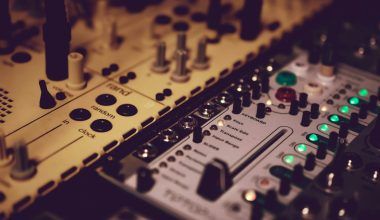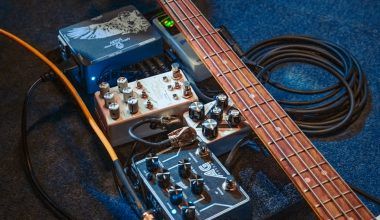Producing music might seem intimidating, especially when you’re starting out. But don’t worry! With the right tools, guidance, and mindset, anyone can learn how to produce music. In this blog, we’ll walk you through the process in simple, clear steps, ensuring you feel confident as you embark on your musical journey.
What is Music Production?
Music production is the process of creating a piece of music from start to finish. It involves writing, arranging, recording, editing, mixing, and mastering. Each step shapes the final track, making it sound polished and professional. Whether you’re producing music for fun or aiming to build a career, understanding these basics is essential.
Why Learn How to Produce Music?
Learning how to produce music empowers you to bring your ideas to life. Instead of relying on others to create your vision, you take control. Plus, it’s a fantastic creative outlet! Producing music can be therapeutic, exciting, and deeply satisfying.
Step 1: Set Up Your Home Studio
The first step to producing music is setting up a space where creativity can flow. You don’t need a fancy studio; a simple home setup works just fine. Here’s what you’ll need:
- A Computer: Your computer will be the hub of your music production. Choose one with enough processing power to handle audio software.
- Digital Audio Workstation (DAW): A DAW is the software where you’ll create, record, and edit your music. Popular options include FL Studio, Logic Pro, and Ableton Live.
- Audio Interface: This connects your instruments or microphones to your computer.
- Headphones and Monitors: High-quality headphones and studio monitors help you hear your music clearly.
- MIDI Keyboard: While optional, a MIDI keyboard makes it easier to create melodies and beats.
Setting up your studio is exciting. Once everything is in place, you’re ready to dive in.
Step 2: Learn the Basics of Your DAW
Your DAW is where the magic happens, so it’s important to get comfortable with it. Spend time exploring its features. Watch tutorials, experiment, and practice frequently. Most DAWs have a similar layout, which typically includes:
- Tracks: Where your audio and MIDI recordings go.
- Mixer: For adjusting volume, panning, and effects.
- Plugins: Tools for adding effects and virtual instruments.
Don’t worry if it feels overwhelming at first. With time, you’ll get the hang of it.
Step 3: Start with Simple Beats
Now that you’re familiar with your DAW, it’s time to create your first track! Start simple by making a basic beat. Beats form the foundation of most music, so learning how to produce them is crucial.
Here’s a quick way to create a beat:
- Choose a drum kit in your DAW.
- Create a kick drum pattern (the “thump” sound).
- Add snare and hi-hat sounds to complement the kick.
- Play around with different rhythms until you find one that feels right.
Producing music is all about experimenting. Don’t be afraid to try new things!
Step 4: Add Melodies and Chords
Once your beat is ready, it’s time to layer melodies and chords. A melody is a sequence of notes that sticks in the listener’s mind, while chords provide harmony.
Here’s how to get started:
- Use your MIDI keyboard or DAW’s piano roll to create melodies.
- Experiment with different instruments, like pianos, synths, or guitars.
- Try simple chord progressions like C-G-Am-F if you’re unsure where to begin.
Melody-making can feel tricky, but trust your ears. If it sounds good to you, you’re on the right track!
Step 5: Experiment with Sounds and Effects
One of the most fun parts of learning how to produce music is experimenting with sounds. Use plugins to add effects like reverb, delay, or distortion. These effects can completely transform your track.
Here are a few tips:
- Use reverb to create a sense of space.
- Apply EQ (equalization) to balance frequencies.
- Experiment with automation to make your track dynamic.
Playing with effects is where your creativity shines. Let your imagination guide you!
Step 6: Record Vocals or Instruments
If you’re working with live elements, like vocals or instruments, now’s the time to record them. Ensure you use a quality microphone and take multiple takes to get the best performance.
While recording, keep these tips in mind:
- Record in a quiet space to avoid background noise.
- Warm up your voice or instrument before recording.
- Use your DAW to edit and clean up the recordings.
Live elements add a personal touch to your music, making it truly unique.
Step 7: Mix Your Track
Mixing is the process of balancing all the elements in your track. It ensures that every sound fits together harmoniously.
Here are some key aspects of mixing:
- Volume Balance: Adjust the levels of each track.
- Panning: Place sounds in the stereo field (left, right, or center).
- EQ: Shape the tone of each element to avoid clashing frequencies.
- Compression: Control the dynamics of your track.
Mixing takes time, but don’t rush. It’s what makes your track sound polished and professional.
Step 8: Master Your Track
Mastering is the final step in music production. It involves optimizing your track for playback on various devices.
During mastering, you’ll:
- Adjust the overall loudness.
- Ensure consistent sound quality.
- Prepare the track for distribution.
If you’re just starting out, you can use online mastering tools. As you gain experience, you might prefer to learn mastering techniques yourself.
You’ve made it! Your track is ready to share with the world. Upload it to platforms like SoundCloud, Spotify, or YouTube. Sharing your music is a great way to get feedback and connect with other music enthusiasts.
Tips for Staying Inspired
Producing music is a journey. Here’s how to stay motivated:
- Listen to music you love and analyze its structure.
- Collaborate with other producers or musicians.
- Take breaks to avoid burnout.
- Keep learning new techniques and styles.
Every producer’s journey is unique, so embrace the process and enjoy the ride!
Final Thoughts
Learning how to produce music is an exciting and rewarding journey. With patience and practice, you’ll unlock your creative potential and develop your unique sound. Start small, experiment often, and don’t be afraid to make mistakes. After all, music is about expressing yourself and having fun.
So, what are you waiting for? Set up your studio, fire up your DAW, and start creating amazing tracks today!
For further reading, explore these related articles:
- Discover the Best Hot TikTok Songs of 2024 That Everyone Loves
- How We Use Microphones in Everyday Life and Beyond
For additional resources on music marketing and distribution, visit DMT Records Pvt. Ltd..






